The Adoration of the Magi is a tempera painting measuring 111 by 134 cm. Painted in 1475, it is considered the first masterpiece of Florentine artist Sandro Botticelli.
The Tuscan painter was one of the masters of the intellectual and artistic movement known as the Renaissance. The Renaissance took place in Europe between the 15th and 16th centuries. It combined models of harmony and beauty from classical antiquity with the new knowledge and humanist spirit of the modern age.
In Italy, the liveliest center of Renaissance culture was Florence, ruled by the de’ Medici family. Botticelli rose to fame in Florence after having worked as an apprentice to several of the city’s artists. In 1470 he opened his own studio and received numerous commissions. In 1475 Gaspare di Zanobi del Lama, a banker with close ties to the de’ Medici family, asked Botticelli to paint the Adoration of the Magi for his chapel in the church of Santa Maria Novella.
The adoration of the Magi was a common theme in paintings of that period. But Botticelli’s interpretation was innovative in a number of ways. Despite the religious theme, the artist decided to portray real people, drawing his inspiration from members of Florence’s political world. In particular, he painted some members of the de’ Medici family, paying a prestigious tribute to the city’s rulers and creating an important historic document.
Scholars believe that the three Wise Men kneeling before the Sacred Family are in fact patriarch Cosimo il Vecchio and his sons, Piero and Giovanni. The character dressed in red in the foreground on the left is thought to be Lorenzo the Magnificent, ruler of Florence during the second half of the 1400s, and together with Giovanni de’ Medici, the only family member in the painting still alive in 1475. Cosimo and Piero had in fact been deceased for years.
Botticelli also included himself in the painting. He can be seen to the far right of the painting, dressed in yellow. The banker who commissioned the work was portrayed as well, located on the right and pointing his finger at the viewer. Another innovative element of the artwork was Botticelli’s frontal viewpoint in representing the scene. Contrary to tradition, the artist did not place the Sacred Family to one side, isolating it from the other characters, but at the center of the painting.Today Botticelli’s Adoration of the Magi is on display in the Uffizi Gallery in Florence.
The Tuscan painter was one of the masters of the intellectual and artistic movement known as the Renaissance. The Renaissance took place in Europe between the 15th and 16th centuries. It combined models of harmony and beauty from classical antiquity with the new knowledge and humanist spirit of the modern age.
In Italy, the liveliest center of Renaissance culture was Florence, ruled by the de’ Medici family. Botticelli rose to fame in Florence after having worked as an apprentice to several of the city’s artists. In 1470 he opened his own studio and received numerous commissions. In 1475 Gaspare di Zanobi del Lama, a banker with close ties to the de’ Medici family, asked Botticelli to paint the Adoration of the Magi for his chapel in the church of Santa Maria Novella.
The adoration of the Magi was a common theme in paintings of that period. But Botticelli’s interpretation was innovative in a number of ways. Despite the religious theme, the artist decided to portray real people, drawing his inspiration from members of Florence’s political world. In particular, he painted some members of the de’ Medici family, paying a prestigious tribute to the city’s rulers and creating an important historic document.
Scholars believe that the three Wise Men kneeling before the Sacred Family are in fact patriarch Cosimo il Vecchio and his sons, Piero and Giovanni. The character dressed in red in the foreground on the left is thought to be Lorenzo the Magnificent, ruler of Florence during the second half of the 1400s, and together with Giovanni de’ Medici, the only family member in the painting still alive in 1475. Cosimo and Piero had in fact been deceased for years.
Botticelli also included himself in the painting. He can be seen to the far right of the painting, dressed in yellow. The banker who commissioned the work was portrayed as well, located on the right and pointing his finger at the viewer. Another innovative element of the artwork was Botticelli’s frontal viewpoint in representing the scene. Contrary to tradition, the artist did not place the Sacred Family to one side, isolating it from the other characters, but at the center of the painting.Today Botticelli’s Adoration of the Magi is on display in the Uffizi Gallery in Florence.
RELATED
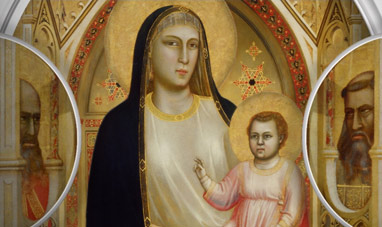

THE MADONNA DI OGNISSANTI


ST. PETER'S BALDACHIN
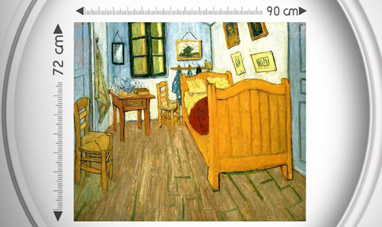

THE BEDROOM
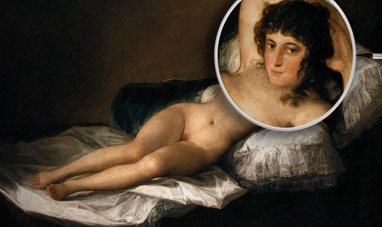

THE NUDE MAJA
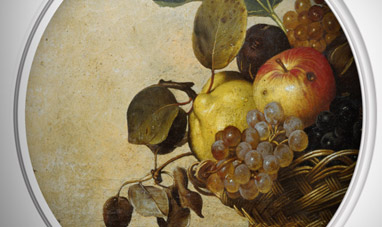

BASKET OF FRUIT
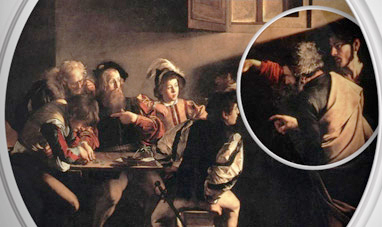

THE CALLING OF ST. MATTHEW


MICHELANGELO BUONARROTI
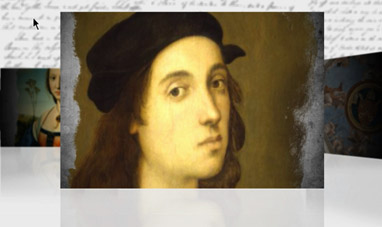

RAPHAEL
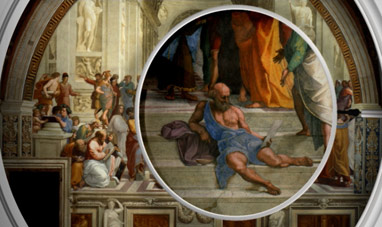

THE SCHOOL OF ATHENS
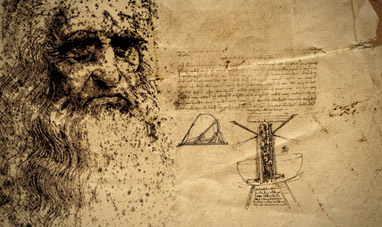

LEONARDO DA VINCI


SATURN DEVOURING HIS SON
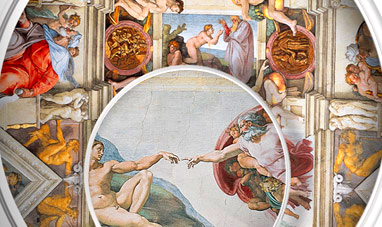

THE SISTINE CHAPEL


SOLOMON R. GUGGENHEIM MUSEUM


THE ECSTASY OF SAINT TERESA
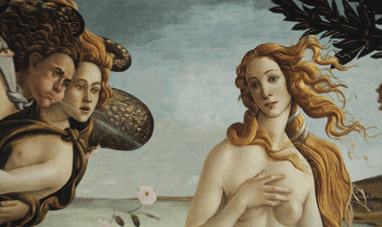

THE RENAISSANCE
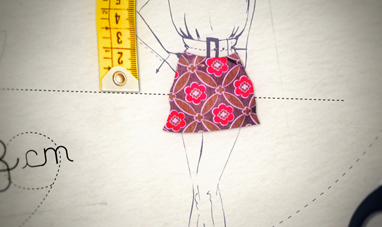

MINISKIRT


BAROQUE


DISQUIETING MUSES


LAS MENINAS
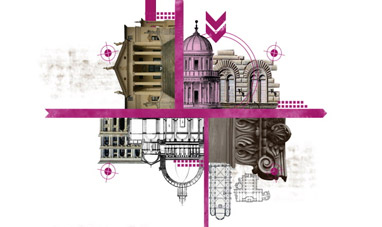

LEON BATTISTA ALBERTI
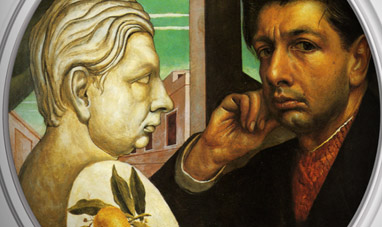

SELF PORTRAIT (GIORGIO DE CHIRICO)
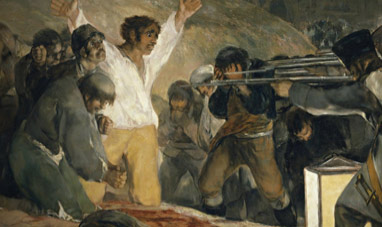

THE THIRD OF MAY 1808: THE EXECUTION OF THE DEFENDERS...
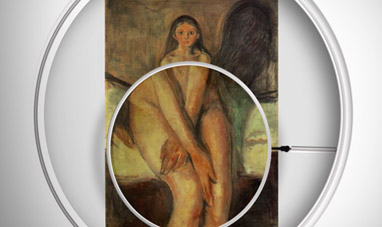

PUBERTY
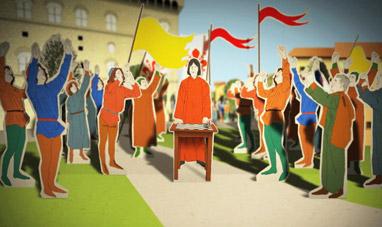

LORENZO DE' MEDICI


THE CRUCIFIX OF SANTA MARIA NOVELLA
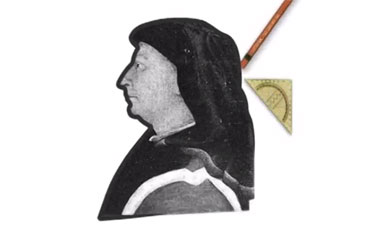

FILIPPO BRUNELLESCHI


LOVE SONG


INNOCENT X


GIOTTO-S-FRESCOES-IN-THE-ASSISI-CATHEDRAL
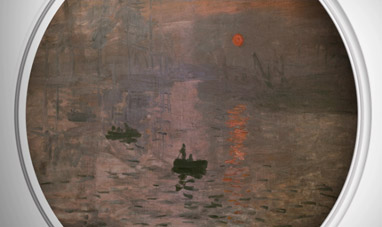

IMPRESSION, SUNRISE


DAVID (MICHELANGELO)


ROMANTICISM


WATER LILIES (SERIES)
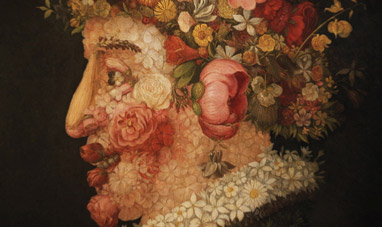

MANNERISM
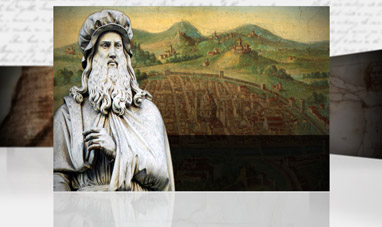

LEONARDO DA VINCI
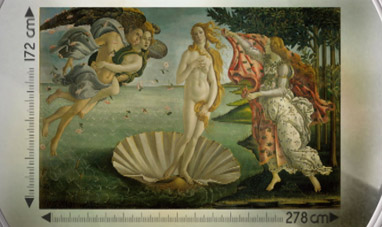

THE BIRTH OF VENUS
